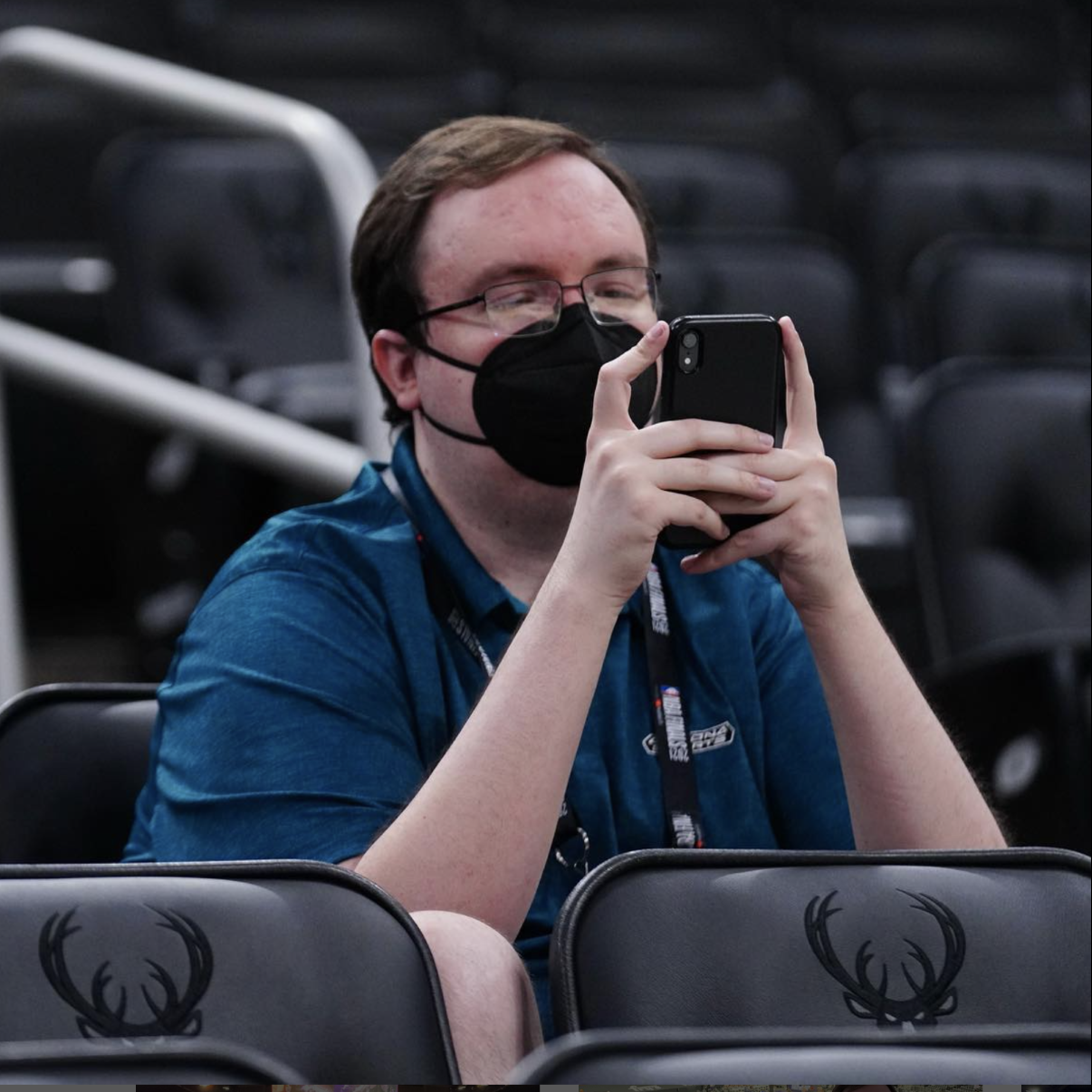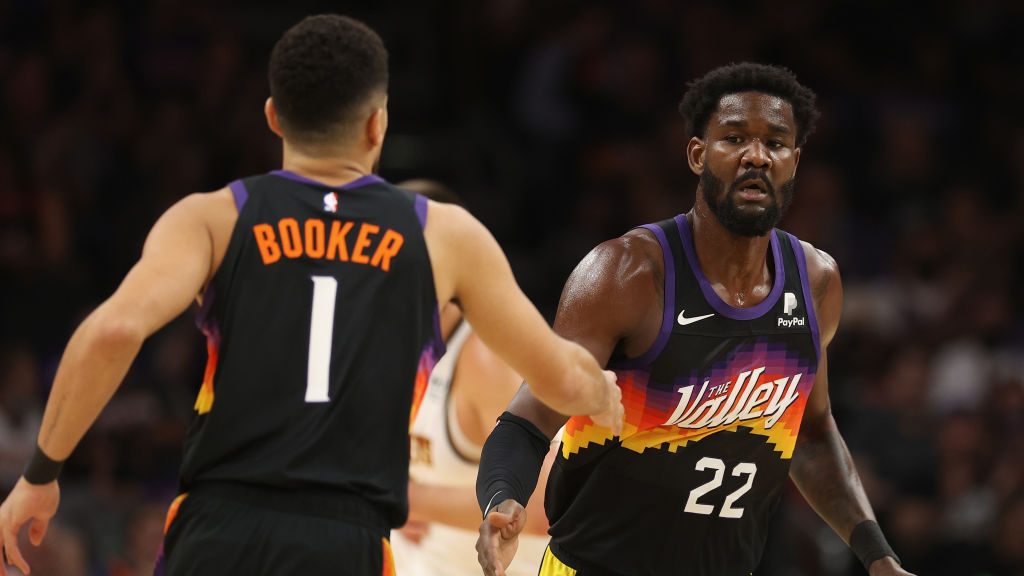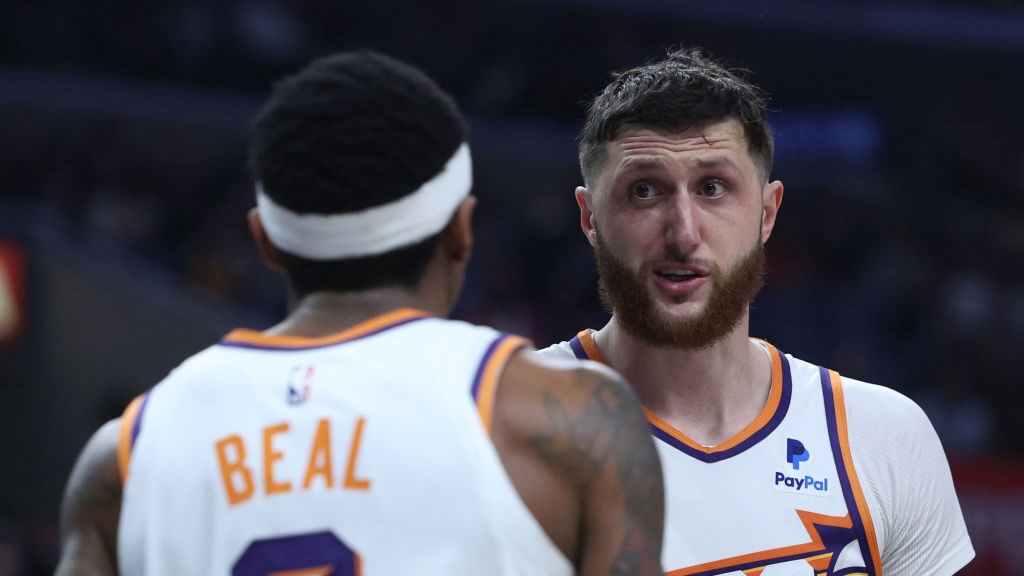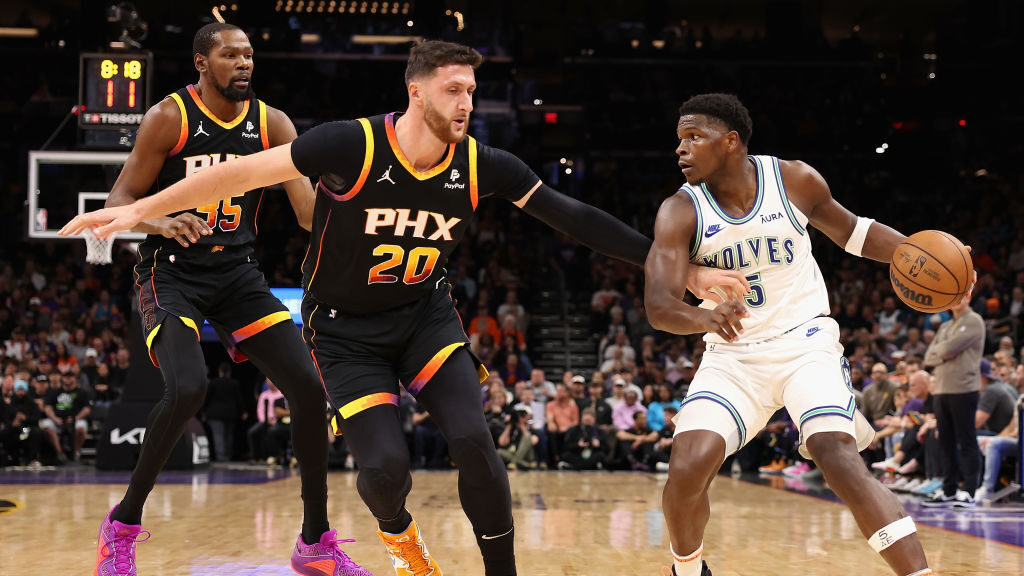Lessons learned from Suns’ 2021 postseason, Pt. 3: Versatility kings
Apr 12, 2022, 5:45 PM

Jae Crowder #99 (left) and Chris Paul #3 of the Phoenix Suns sit on the bench during their game against the Golden State Warriors in the second half at Chase Center on March 30, 2022 in San Francisco, California. (Photo by Ezra Shaw/Getty Images)
(Photo by Ezra Shaw/Getty Images)
Ahead of the Phoenix Suns’ second straight trip to the postseason, we will be taking a look back at last year’s run to the NBA Finals, and what we can learn from it that should also apply to this season’s run.
After covering homecourt and the Suns’ two main young pillars thriving in playoff basketball, we will review the stylistic excellence Phoenix showcased.
It has been a season-long theme of the Phoenix Suns’ 64-18 campaign that this is a team with no glaring weaknesses. There are a few rather small ones we will get to in the fourth and final part of this series, but in the grand scheme of things, there’s not much there.
This is what really came to fruition last summer. At a certain point in the semifinals against the Denver Nuggets, there was a moment of realization I had where the Suns very well could be the best team in the league and win the championship, experience be damned.
That quite obviously carried over to this regular season.
What the Suns have as a whole can be labeled as versatility, like it is in the headline of this story, but it’s really about how rock-solid Phoenix is in all areas, especially in halfcourt situations. When you think about it, that actually is being versatile. Stick with me if I lost you. I would never lead you astray. I promise.
Dating back to last year, Phoenix has always been a better defensive team than offensive team.
The foundation of that is built on two individuals: Mikal Bridges and Deandre Ayton.
Bridges picks up nearly every primary initiator of an offense the Suns come up against. Over the last four years, he has built up terrific chemistry with Ayton the anchor. With the way Bridges irritates ball-handlers, getting his hands everywhere because of his long arms while gliding through actions to maintain his cover, it is strengthened by what Ayton does.
When space materializes, Ayton is going to halt most possessions at about 12 feet or further. From there, it’s up to the ball-handler if they want to take a below-average shot. In some cases, Ayton can stall things out in that space until Bridges gets back.
If the Suns and Bridges want to funnel the play into the key, that’s where Ayton lies as one of the league’s best rim protectors. And again, Bridges’ recovery speed and length allow him to get back into the play occasionally.
Sometimes these ball screens turn the ball-handler into Ayton’s primary responsibility, one he is trusted with for a reason.
And let’s say the Suns want to mix it up with switching or have Ayton on the court with five opposing perimeter players. He can hang, a skill he showcased as early as his rookie season.
That is the heart of an awesome defense. The soul of it is the savvy of Jae Crowder and Chris Paul.
It has been clear as day watching those two help the young trio of Bridges, Ayton and Devin Booker iron out a litany of required, meticulous details to be a functioning part of a great defense. Because, remember, those guys were around for a whole lot of bad basketball and, by default, bad defense before the veteran duo arrived.
And that process’s completion in 2021 was filled with Crowder and Paul keeping the defense’s shape intact in the helping positions of the defense. That is the immeasurable luxury Bridges has provided this group with his ability as a wing to cover point guards most nights.
If you pay attention enough, you see where Crowder and Paul achieve this. They are constantly talking on the backside, moving where they need to go to fill in the brief holes before they are quickly eradicated.
Their mastery of it is just a treat to watch in a lesser defensive role on the back-half of their respective careers. Paul is a nine-time All-Defense honoree and Crowder is someone head associate coach Kevin Young called possibly the most intelligent player he’s ever coached when it comes to understanding coverages and gameplans.
I’d go as far as classifying them as defensive playmakers with how they swarm on some possessions.
Both those guys are still sharp on the ball too.
Then there’s Booker, who always had the smarts and physical tools to be a good defender. He held up his ends of the bargain last season by becoming an average defender, arguably above average before that became inarguable this year with the step forward he took again.
It is really hard to field a lineup in the NBA of defenders that 1) each does their own part consistently well and 2) cannot be picked on in perimeter mismatch situations.
The Suns have that lineup and it’s all because their best player and face of the franchise puts in the work.
Teams love to attack Booker to burn away at his gas tank, but he’s more than used to it at this point, and once again, is no slouch (unlike many other stars).
On the other end, Booker and Paul run offense better than any other pair in the league. Williams’ playoff rotation maximizes that by staggering the minutes so at least one of them is on the floor at all times.
The floor general chops are more important than what Booker and Paul are really known for and what makes them so deadly, which is their ridiculous shotmaking capabilities that can swing any game.
When either gigantic individual threat has the ball and gets a screen from Ayton, the gravity of his rolls opens up so much as the real pick-your-poison element of the offense.
Like the defense, there is balance at the core of this.
Bridges and Crowder are incredibly dependable as supplementary perimeter players. They are both great at what makes Williams’ system and James Jones’ roster so good: 0.5-second decisions. When that aforementioned defensive attention swallows up what Ayton, Booker and Paul have available, the ball swings to one of those two, and they can still make the defining play of the sequence.
Whether it’s creating for themselves or others, the offense will never just sputter out and die once the top dogs don’t have the rock anymore.
This happens all the time in other offenses. It does not in the Valley.
And what’s going on off the ball is pretty darn cool if you get your microscopes out to see what Williams and his staff cook up to keep the movement up.
ESPN’s Zach Lowe expertly detailed how the Suns do this in a continuously evolving fashion in ball screen situations.
You can pick out smaller subtleties, like how Crowder will creep up from a corner to either give himself even more space or open up a better passing lane.
Deploying shooters in those corners is what today’s NBA era of pace and space is all about. More specifically, floor balance. But the Suns will empty those corners sometimes to make the defense a little more awkward.
A shooter in the corner means there’s a defender there who can help on someone like Ayton, but what if that corner or even that side of the floor is empty? The Suns have specific sets for Ayton that get free buckets off that irregularity.
Or what if the Suns put Booker in that corner? You can’t help off him.
Those are three tiny examples of an offense that has a plethora of gadgets inside of it.
Sometimes you sound like a fool when analyzing the Suns. This was my elongated version of just saying, “Man, the Suns are just an excellent basketball team.”
It’s why there is no team that beats them when they are playing at this level. They did not in the NBA Finals and came up short. We’ll see if they can make up for that this time.









